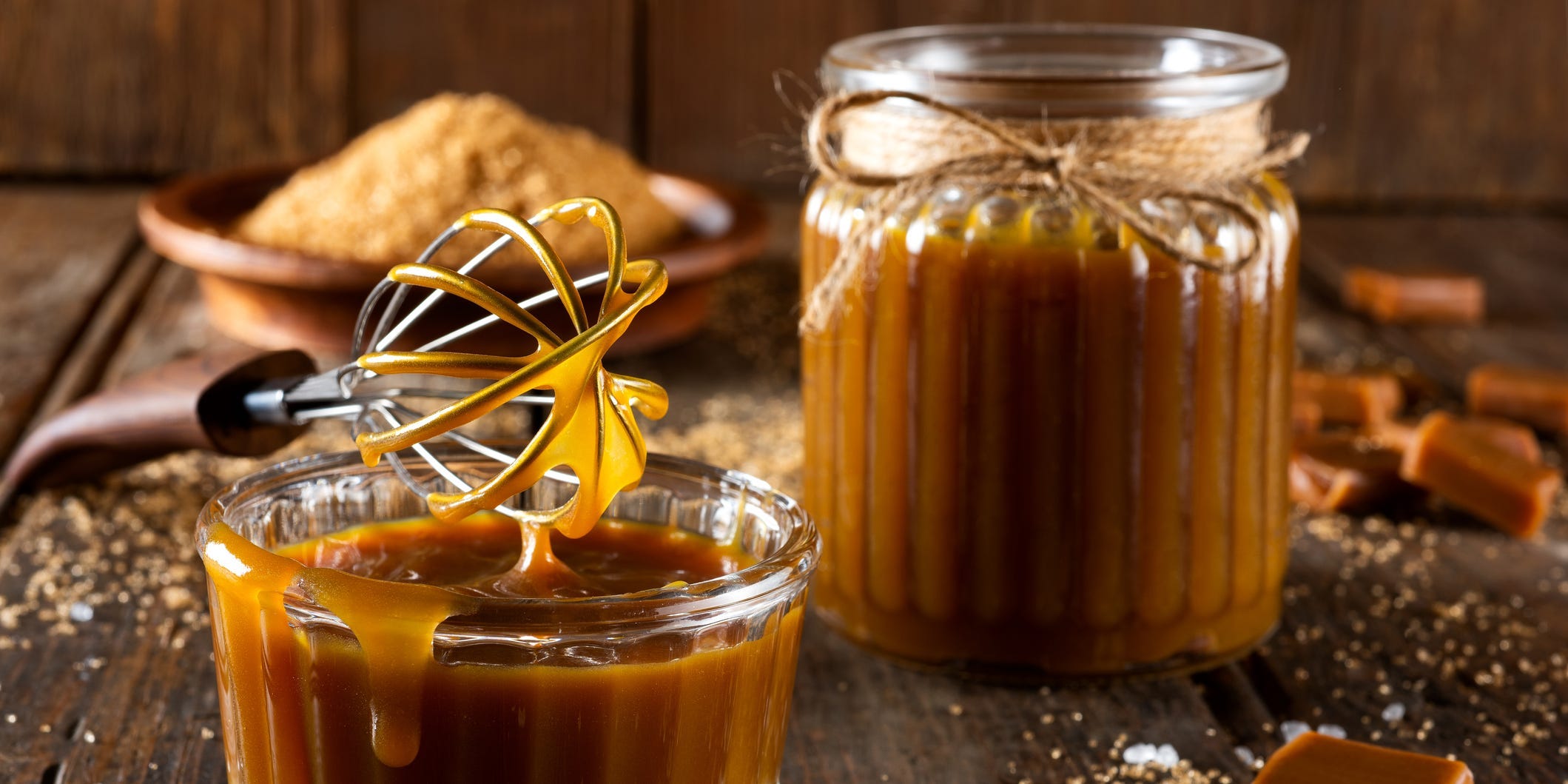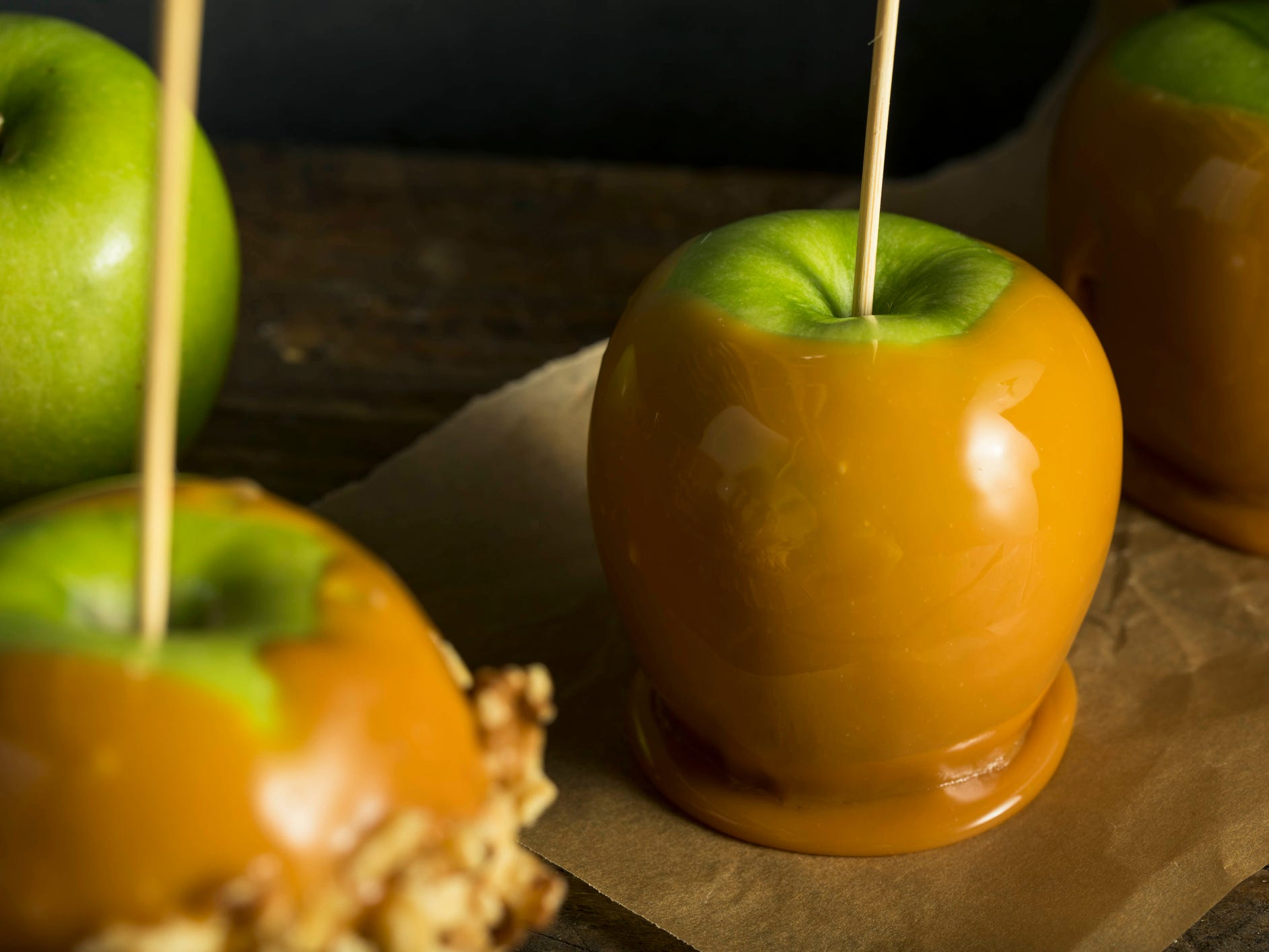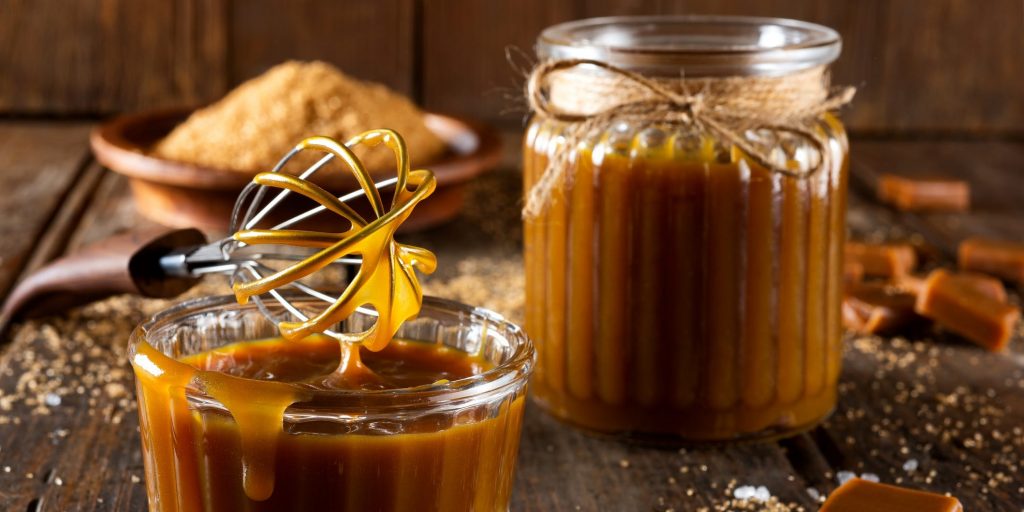
BURCU ATALAY TANKUT/Getty Images
- Caramel is the result of cooking sugar to one's desired color and texture.
- It can be prepared as a sauce, chewy candy, or hard candy depending on your needs.
- Making caramel confections only requires sugar, butter, cream, water, and salt – and a watchful eye.
- Visit Insider's Home & Kitchen Reference library for more stories.
The decadent, buttery confection known as caramel can be enjoyed in a myriad of ways. Depending on how it is prepared, it can be drizzled on top of ice cream, layered into a dessert, enrobed in chocolate, or enjoyed in a hard candy form (just to name a few options). Sticky and sweet, with just a hint of salt, it's a treat that has won the hearts of dessert fans everywhere.
At its core, caramel is just melted sugar that has deepened in color, taking on more complex and nuanced flavors (like toasted notes and hints of toffee) during the cooking process. It is surprisingly easy to make, as it only requires a handful of ingredients and a watchful eye.
Dry caramel vs. wet caramel

bhofack2/Getty Images
There are two ways of making caramel: dry and wet.
For dry caramel, sugar is heated in a dry, clean pan until it liquefies and darkens in color. This method is quick, but if you aren't careful, you run a high risk of burning the sugar. The pan needs to heat as evenly as possible so that all of the sugar melts at the same time, otherwise you'll end up with uneven browning.
Wet caramel is made by adding water to the pan to help the sugar to dissolve and heat evenly. You're less prone to burning the syrup this way, but this method carries the risk of crystallization - where the sugar starts to return to its original solid state. The reason for this can be due to stirring, a foreign substance getting into the mixture, or simply just because sugar crystals prefer to naturally sit in their solidified structure.
Successfully executed, the end result of both the methods is the same - caramel. So which method is best? It's really a matter of preference.
"You can ask 10 different people which they prefer and you will get 10 different answers," says Ruth Kennison, chocolate and confections educator at The Gourmandise School in Santa Monica. "Because the water boils off as the sugar caramelizes, the wet method also prolongs the total time that the sugar is heated, which would help complex flavors to develop. [With the dry method] you have a lower risk of crystallizing the sugar, it's faster, and you have more control over the sugar caramelizing."
How long to cook caramel to achieve the right texture
When making caramel, you'll need to decide what texture you're looking to achieve, whether it's liquid, semi-solid, or completely solid. "As sugar syrup is cooked, water boils away, the sugar concentration increases, and the temperature rises," says Kennison. The higher the temperature, the harder the syrup will become as it cools - this is where a candy thermometer is important.
| Texture | Target temperature | Cook time (approx.) |
| Caramel sauce | 215 - 235 degrees Fahrenheit | 5-10 minutes |
| Chewy caramels | 245 degrees Fahrenheit | 10-15 minutes |
| Hard caramels | 300 - 310 degrees Fahrenheit | 15-20 minutes |
What to do if your caramel crystallizes
If your sugar syrup starts to form crystals that make your sauce grainy, don't panic. "You will want to reheat the sugar and add more water to it and cook it gently," says Kennison. The additional water will help dissolve the sugar crystals again so you end up with a smooth consistency.
Safety tips
- Do not make caramel with babies, toddlers, or pets nearby.
- Never walk away from cooking sugar - molten sugar can brown very quickly and burn if it isn't monitored.
- Keep a bowl of cool water next to your cooking station in case you need to plunge your hand in if burnt.
- Never lick hot caramel off a spoon, as you will burn your tongue.
Insider's takeaway
Caramel is one of the easiest confections to make at home and only requires a few ingredients. Getting comfortable with the caramelization process requires patience and a watchful eye, but by simply learning how high to heat your molten, browned sugar, you'll be able to make caramel sauce, chews, or hard candies in the comfort of your own kitchen.
